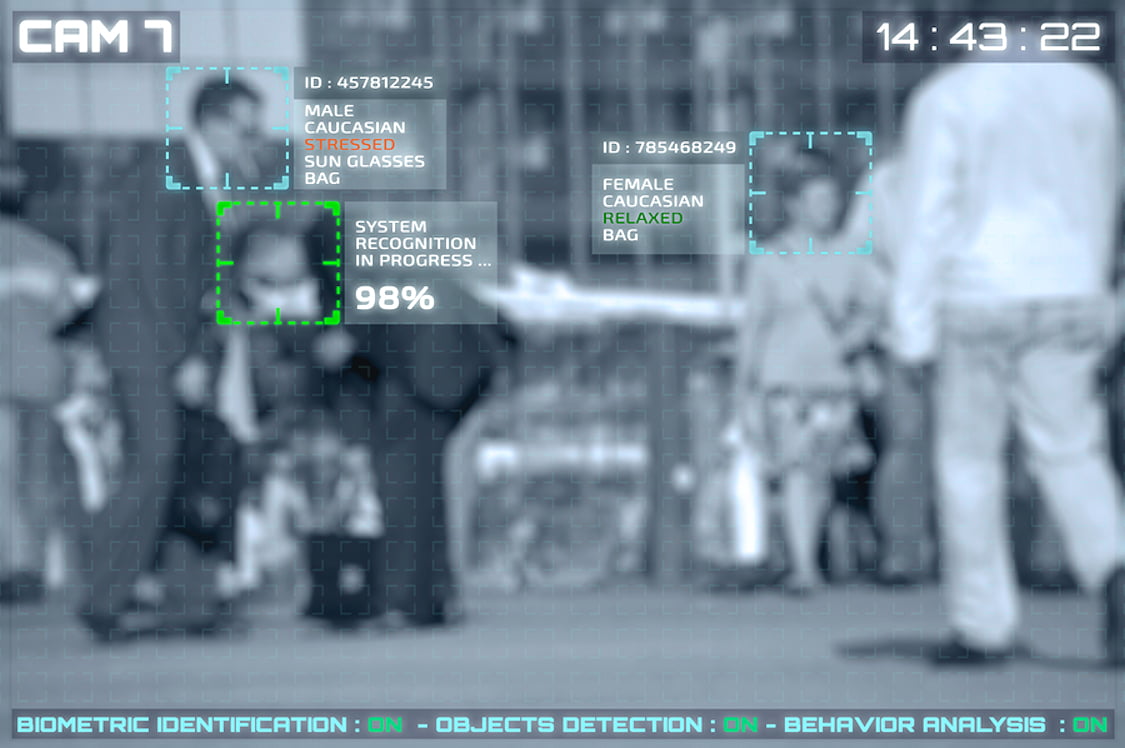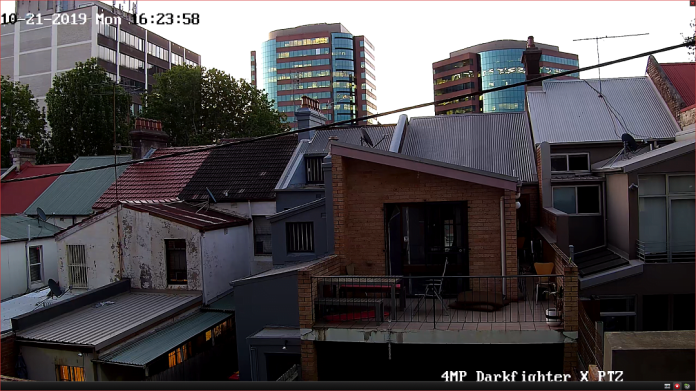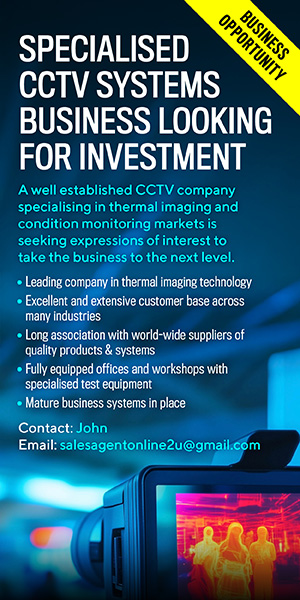Face recognition is at once the jewel in the crown of video analytics and the technology most likely to attract the attention of privacy advocates who fear it may be mismanaged. We spoke with providers about whether there was a risk that failure to utilise face recognition technology will impact on the effectiveness of video surveillance solutions in the future.
According to Vix Vizion’s Fraser Larcombe, there’s a definite risk that putting face recognition technology to one side will have an impact on the potential performance of the CCTV solutions of the future.
“In these times of global pandemic when more people are becoming unemployed, there may be an increase in theft,” Larcombe says. “Utilising the best technology to mitigate against shrinkage will have a big impact on loss prevention, and can certainly help to keep companies trading efficiently in leaner times.
“There are also applications of face recognition technology which have a strong connection to social change, and helping people. An example of this would be stopping people who have placed themselves on self-exclusion lists from entering clubs/casinos if they want to curb their gambling habits, which is very difficult to do without the right video surveillance technology.”
Something that is challenging for end users is finding a balance between the power of FR and privacy but Larcombe argues there is a middle ground.
“With the right face recognition system in place, the only faces that can be stored are the ones of interest, rather than recordings being made right across the board,” he explains. “The big issue with most face recognition systems is that they store every face that comes through the system’s field of view, and nobody knows who recorded individuals are. However, this information can be stored as metadata if needed (certainly with Imagus software), which means no faces are stored other than the enrolled people of interest.”
“The most workable applications of face recognition technology include event searches, biometric access control, alerts to watch lists, and biometric access control, which should be closely used in conjunction with dual authentication.”
Something that’s clear in spite of the privacy concerns around FR is that the public is ok with self-managed face recognition in self-owned smart devices. The questions is, can this comfort with users holding the biometric be leveraged to ensure increased security and increased privacy in a number of different applications? Larcombe argues it can.
“Most people we talk to are fine with facial recognition,” he says. “The point comes back that if they haven’t done anything wrong then there is no need to be concerned about it and that FR can only enhance security and ease of use when used for access control. Obviously, privacy is still a big issue for some organisations, not just for the user but the overriding issue of how the public perceives facial recognition. This is the biggest hurdle to overcome.
“However, the way people currently perceive face recognition technology is quite far from the truth. As opposed to many people’s perception that it is watching them, the technology doesn’t know who you are, unless you have been added to a list by a system owner for a specific and valid reason. There is no floating information above everyone’s head showing their name, passport number and bank details, like you tend to see in spy movies. This generalised discomfort is certainly a deterrent for our FR customers, and in turn their own customers, and something we need to overcome through better education, and through open discussions about face recognition technology.”
There have been issues with some face recognition algorithms tending to generate more false positives with some groups of people – is it possible that such performance flaws can be eliminated with further research and development, according to Larcombe?
“These issues are starting to be eliminated with software models now based on many ethnicities this discernment will only get better with time,” he says.
Something else that needs consideration is that video content analysis is valuable regardless of whether facial recognition technology functionality is present – should system users take care to avoid throwing out the baby with the bathwater?
“Yes, absolutely, video content analysis can be used for so much more, whether this is demographic information, counting of people, occupancy counting and much more,” Larcombe says. “For instance, marketing applications in retail stores (where users are shown in-store promotions that apply best to them) will become more of a key over the next 18 months and the ability to show information critical to the business will only help those businesses grow again by being more focused on their customer traffic.”

Face recognition offers a solution for touchless access control applications.
Milestone Systems’ Brett Hansen agrees that facial recognition promises to enhance the ability of video surveillance solutions in a way that was inconceivable a few years ago and he argues ignoring the technologies potential will impact on system capabilities in the future.
“There is no doubt that facial recognition technology, if used responsibly, can solve a lot of security challenges,” Hansen says. “There are a lot of very positive ways in which it can be deployed, and these often tie in with other technologies as well, so I do agree that ignoring the technology will impact the effectiveness of video solutions in the future.
“As a Danish company, we are acutely aware of data privacy and have taken many steps throughout the organisation to ensure we adhere to GDPR regulations worldwide. In 2017, we joined over 150 representatives from technology companies around the world to author and sign the Copenhagen Letter – a declaration that calls on tech companies of all types to put people first rather than business and profits when designing and using technology.
“At Milestone, we live by the values outlined in the Copenhagen Letter, and we want our global community of partners and customers to do the same. In our product releases, we place high focus on the responsible use of technology by providing a range of GDPR-compliance tools for our customers, and by embracing the UN Universal Declaration of Human Rights for our platform’s use.
“There will always be a fine balance between the responsible use of technology, the power and innovations available in modern integrations, and the broader requirements of private and public sectors but as a technology company, we believe that we exert great influence and we must always encourage, protect and nurture the potential to do good.”

Is it possible for face recognition technology to enhance security operations while ensuring privacy is maintained – if so, how do you think this can be achieved?
“This technology is not only applied to the recognition of individuals faces, it can be utilised in facial detection, gender verification, age, facial expression and face mask detections,” says Hansen. “These applications can further enhance the organisation’s ability to manage health and safety, operational capability, and retail data without recording an individual’s biometric profile. As we have started to see, there are developing situations whereby facial recognition technology is having a very positive impact.
“For example, Milestone Systems recently worked with BOSS Security and Vix Vizion to deploy a solution at Carina Leagues Club, and another at Churchill’s Sports Club, to help people who have placed themselves on the self-exclusion register for problem gamblers. This is an opt-in service that relies upon employees recognising when a person who has opted into the scheme tries to enter a venue, or part of a venue that they have restricted themselves to.
“The technology takes the onus off staff to remember each person individually and recognise them if they try to enter and allows management to calmly and diplomatically intervene. There are plenty of situations like this, that point to facial recognition as a force for good rather than being an invasive technology.
“Security and surveillance have been around for ages, without which, we our buildings and premises will never be secure. I would argue that the middle ground is for organisations to recognise that in this data-driven environment, we all have the responsibility to protect customers and the society at large.
“When it comes to the most workable applications of face recognition technology, Milestone’s experience indicates that alerts to a watch list act as a very effective way of using the technology, often removing, or at least reducing the risk of human error or oversight and allowing staff to focus on higher level activities, rather than staring at monitors.”
When it comes to the public’s comfort with face recognition technology thanks to exposure to the technology through smart devices, Hansen says this has altered feelings, but only up to a point.
“While the use of facial recognition has gained greater societal acceptance, especially in light of the COVID-19 pandemic, we see that there’s still a significant portion of the population that is unfamiliar with the purpose and benefits of such solutions, especially when they’re leveraged by third parties,” he explains.
“Consumers remain vigilant about how businesses are using their personal data – this means organisations must prioritise data protection and practice full transparency to build greater trust in such solutions. To help system integrators and end users design, implement and operate video surveillance systems that are compliant with such privacy regulations, Milestone provides a holistic set of tools, including privacy guides, best practices and training resources to build privacy awareness.”

“Technology is always evolving, and this is a particularly innovative and dynamic facet of video technology. There is always scope for technology to be refined and improved, and facial recognition is no different, especially as other elements of the ecosystem become more sophisticated, and video analysis integrates more and more deeply with artificial intelligence and machine learning tools.
“We are frequently engaged in projects with our partners and customers that involve this technology, and we see it appearing in more diverse and sophisticated deployments all the time. There are many other effective ways to plan and deploy an effective security, safety or general optimisation solution as well, so customers many viable options to any business challenge.
“What our customers know is that our open VMS gives them the flexibility to integrate with smarter, new technologies, but incorporating security, convenience and privacy does not have to mean that these are mutually exclusive. You can have a secure system that leverages the best practices of IT system design, and that system can be built and operated within regulation guidelines and in protection of individual privacy.”
Would Hansen agree video content analysis is valuable regardless of whether facial recognition technology functionality is present?
“Yes, very much so,” he says. “There is an ever-increasing array of technologies, applications and plug-ins that make video content analysis a powerful tool – but with great power always comes great responsibility.”
According to Uniview’s Edward Qiu, there is a risk that failure to utilise face recognition technology will impact on the effectiveness of video surveillance solutions in the future, but he argues we can make efforts to avoid it.
“For example, a creation of industry associations like ONVIF to set standards for face recognition utilization,” Qiu says. “We can study together on how to apply facial recognition technology without expanding the infringement of citizens’ privacy and reach a consensus on the norms – for instance where should we keep face data, who can access the face database, what kind of network security level we should apply on face database, etc. Well-managed face recognition technology will be an innovation of video surveillance in the future.”
Qui argues it is possible for face recognition technology to enhance security operations while ensuring privacy is maintained.
“With network security and a well-managed face recognition system, face recognition solutions will work well, while resolving privacy concerns,” he explains. “As I mentioned before, we can set common norms, or more specifically, we can set different levels of standard for products and reflect the privacy security levels on datasheet, which is similar with IP level. Different privacy security levels could meet different customers’ needs in different scenarios, allowing customers to know the privacy security level of the face recognition product they buy – this would be a useful way to assuage privacy worries.”
According to Qui, face recognition functionality self-managed in self-owned devices is workable in security applications – and he argues performance flaws found in some solutions can be eliminated with further development.
“For private use or company, self-managed face recognition in self-owned devices is workable and can ensure increased security and increased privacy for an area of a building,” he says. “When it comes to performance issues, face recognition algorithms never stop evolving. For example, through providing more data from which to learn, deep learning algorithms delivering face recognition perform better and better.”
When it comes to the most workable applications of face recognition technology, Qui argues there are many possibilities, including some that are not generally considered.
“Cooperation with home automation can be a workable application,” he explains. “Face recognition can be incorporated into our daily lives. Imagine your house through its CCTV system can recognize you and knows when you arrive home and will turn on the air conditioner and music for you in advance.”
Like the others, Qui agrees video content analysis is valuable, regardless of whether facial recognition technology functionality is present.
“I agree on that,” he says. “Video content analysis give you more choices and methods to set alarms, which allows you to focus more on what you are considering. What’s more, if you can combine VCA with face recognition, you will get even more useful information from surveillance system.”
#securityelectronicsandnetworks.com











